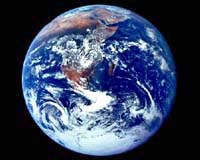
 |
"Every species of large wild fish has been caught so extensively over the past 50 years that 90 percent of each type have disappeared," said the Census of Marine Life report on the first three years' work.
"We are creating an ocean in which it is much safer to be small," said Jesse Ausubel, the programme director for the census, which will be pursued until 2010.
Ausubel particularly highlighted the immediate plight of the leatherback turtle, which he said "may be at risk of extinction."
More than 300 scientists from 53 countries are taking part in the study, which is costing about one billion dollars but is being paid for by the governments of about 50 countries and UN agencies.
The aim is to find all different species and explain their evolution.
The scientists believe there are about 5,000 more species to be discovered.
Ron O'Dor, chief scientist for the Census of Marine Life, said "increases in toxic compounds and temperature in the sea are occurring globally with consequences that are hard to predict."
He said accurate measurements and predictions of species distribution and abundance "are urgently needed to help policy-makers respond appropriately to the consequences of changes in the ocean."
The 15,000-plus species of fish are part of about 210,000 species of marine life known so far. Experts say the final figure could be 10 times greater.
O'Dor said the "most exciting" part of the census so far was in June, when a Russian submarine went down into the Charlie Gibbs Fracture Zone in the North Atlantic Ridge, between the Azore islands and Iceland.
The submersible from RV Akademic Mistislav Keldysh went down 3,000 metres (10,000 feet) below the sea into the underwater mountain range, where humans have never previously been.
"This is the first time anyone has been to this region to do biology," said O'Dor.
"They found many unexpected details. There were a lot of biological materials. They found sponge gardens among these underwater mountains. They also found that this complex habitat has a large number of small tuna fish."
Ausubel highlighted research on Pacific turtles that were found to visit every part of the world's biggest ocean.
"They may leave their eggs on a beach in Mexico and then swim down the coast of South America and then swim to the Galapagos and Polynesia and then up to Japan, back north of Hawaii and to California and go down again.
"Over the course of two or three years, a turtle may visit the entire Pacific," said Ausubel.
A new species of red sponge, named the Rasta Sponge, was recently found off the Florida coast. It contains chemicals that could help in the treatment of cancerous tumours, according to the experts.
In New Caledonia, in the Pacific, scientists found a coral reef in just three metres (10 feet) of water that contained 130,000 molluscs from 3,000 species, many of which have never been seen before.
In coming years, the experts hope to study bacteria that live in the oceans by using new DNA sequencing techniques.
"The marine microbiologists are now joining the census and are starting to undertake a census of marine microbes. As in the soil, the microbes are the basis of the entire food chain," said Ausubel.
TERRA.WIRE |